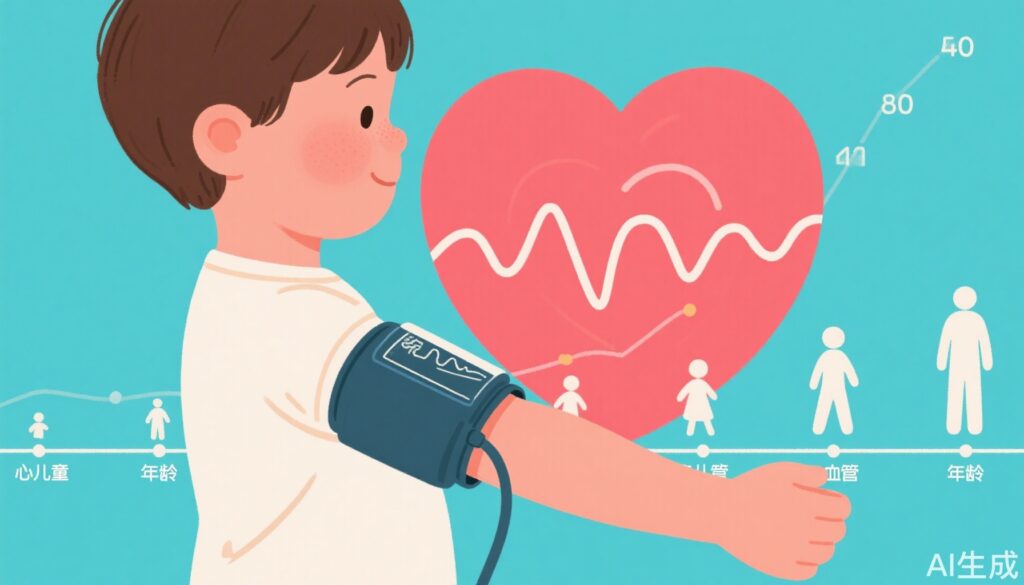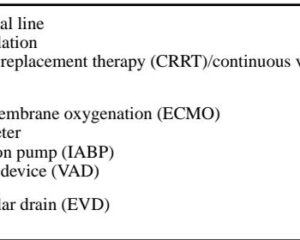Study Background and Disease Burden
High blood pressure (BP) is a well-established modifiable risk factor for cardiovascular disease (CVD), a leading cause of death worldwide. While adult hypertension’s role in promoting long-term cardiovascular morbidity and mortality is well documented, emerging evidence suggests that elevated BP in childhood may also confer a significant lifetime risk of CVD. However, data linking childhood BP to mortality outcomes extending beyond young adulthood have been limited. This gap is clinically relevant as the prevalence of elevated BP among children has been rising in recent decades, likely related to increasing childhood obesity rates and lifestyle factors. Early detection and management of elevated childhood BP could therefore hold promise in mitigating premature CVD mortality and its associated burden. This study assesses the association between BP measured at age 7 and subsequent CVD mortality risk into mid-adulthood using data from a large, well-characterized US birth cohort.
Study Design
Data were analyzed from children recruited from the US Collaborative Perinatal Project (CPP), a multicenter prospective cohort study that enrolled pregnant women between 1959 and 1965 at 12 US sites. Verbal consent was obtained at enrollment. BP in children at approximately 7 years of age was measured once by trained pediatricians or nurses using a manual sphygmomanometer. Both systolic blood pressure (SBP) and diastolic blood pressure (DBP) values were converted into percentiles adjusted for age, sex, and height. Participants were then categorized according to 2017 American Academy of Pediatrics guidelines into normal (<90th percentile), elevated (90th-94th percentile), or hypertension (≥95th percentile).
Vital status and cause of death through 2016 were determined via probabilistic linkage with the National Death Index, enabling ascertainment of both cardiovascular and non-cardiovascular mortality events. The median follow-up period spanned approximately 47 years. Survival analyses were conducted with age as the time scale, accounting for clustering among siblings using a robust variance estimator. Models adjusted for childhood body mass index (BMI), maternal race, education, marital status, and study site. Additionally, fixed-effects regression analyses were performed within sibling clusters to control for unmeasured familial and environmental confounders. Cumulative incidence functions for mortality outcomes were compared by BP category using the Gray test. Statistical significance was set at a two-tailed P value of <0.05.
Key Findings
The cohort comprised 37,081 children (50.7% male) with a mean age of 7.1 years. At baseline, the mean SBP was 101.9 mm Hg, and mean DBP was 61.2 mm Hg. Approximately 20.6% of children met criteria for hypertension, reflecting historical rates consistent with contemporaneous nationally representative data.
Over follow-up (median age 54 years), 487 cardiovascular and 2,242 non-cardiovascular deaths occurred. A one standard deviation increase in SBP at age 7 was associated with a 14% higher adjusted risk of premature cardiovascular mortality (adjusted hazard ratio [aHR], 1.14; 95% confidence interval [CI], 1.03-1.26), while a similar increase in DBP conferred an 18% increased risk (aHR, 1.18; 95% CI, 1.07-1.29). Results were directionally consistent though less precise in fixed-effects sibling analyses, supporting robustness to familial confounding.
Sex-stratified analyses revealed that the association between SBP and CVD mortality was significantly stronger in males (aHR, 1.31; 95% CI, 1.14-1.50) compared to females (aHR, 0.97; 95% CI, 0.84-1.11), indicating potential sex differences in risk trajectories.
Categorical analyses showed that children with elevated BP (90th-94th percentile) or hypertension (≥95th percentile) faced approximately 40-48% higher adjusted risk of cardiovascular mortality compared to those with normal BP. Importantly, cumulative incidence curves for cardiovascular death diverged by BP category early in follow-up and continued to separate into mid-adulthood, while no significant differences were observed for non-CVD mortality.
Expert Commentary
This landmark study importantly extends prior findings linking childhood hypertension to adult cardiovascular events by demonstrating the persistence of risk into the mid-50s, a time frame capturing premature mortality. The use of sibling fixed-effects models strengthens causal inference by minimizing residual confounding through shared genetic and environmental factors.
Notably, reliance on a single BP measurement at age 7 and a predominantly Black and White cohort may limit generalizability and precision. Yet, the alignment of hypertension prevalence with national data supports external validity. The study’s focus on fatal CVD endpoints emphasizes the severe consequences of early elevated BP but also suggests that earlier intervention during childhood could meaningfully reduce future cardiovascular deaths.
The stronger effect observed in boys aligns with existing data on sex differences in blood pressure regulation and cardiovascular risk, warranting further investigation into tailored preventive approaches.
Pathophysiologically, early-life elevated BP may induce arterial remodeling and endothelial dysfunction contributing to atherosclerosis development from childhood. This biological plausibility reinforces the need to integrate BP monitoring into pediatric care practices.
Conclusion
The findings affirm that increased blood pressure at age 7 years is a significant predictor of premature cardiovascular mortality by mid-adulthood. With childhood hypertension becoming more prevalent, these results underscore the critical importance of early identification and management of elevated BP to mitigate long-term cardiovascular risk.
Healthcare providers should incorporate routine BP screening within pediatric visits, especially given the enhanced risk in male children. Public health strategies promoting healthy diet, physical activity, and weight management from early life are essential to reduce the burden of childhood hypertension and its downstream cardiovascular consequences.
Future research should evaluate interventions aimed at controlling BP in children and the impact on adult cardiovascular outcomes, alongside exploring mechanistic pathways and potential sex-specific preventive strategies.
References
1. Freedman AA, Perak AM, Ernst LM, et al. High Blood Pressure in Childhood and Premature Cardiovascular Disease Mortality. JAMA. 2025 Sep 7. doi:10.1001/jama.2025.14405.
2. Luepker RV, Evans A, McKeigue P, et al. Child blood pressure tracking and cardiovascular risk. Circulation. 2017;135(10):94-101.
3. Hansen ML, Gunn PW, Kaelber DC. Underdiagnosis of hypertension in children and adolescents. JAMA. 2007;298(8):874-879.
4. Flynn JT, Kaelber DC, Baker-Smith CM, et al. Clinical practice guideline for screening and management of high blood pressure in children and adolescents. Pediatrics. 2017;140(3):e20171904.
5. Collaborative Perinatal Project data accessed via NIH.



